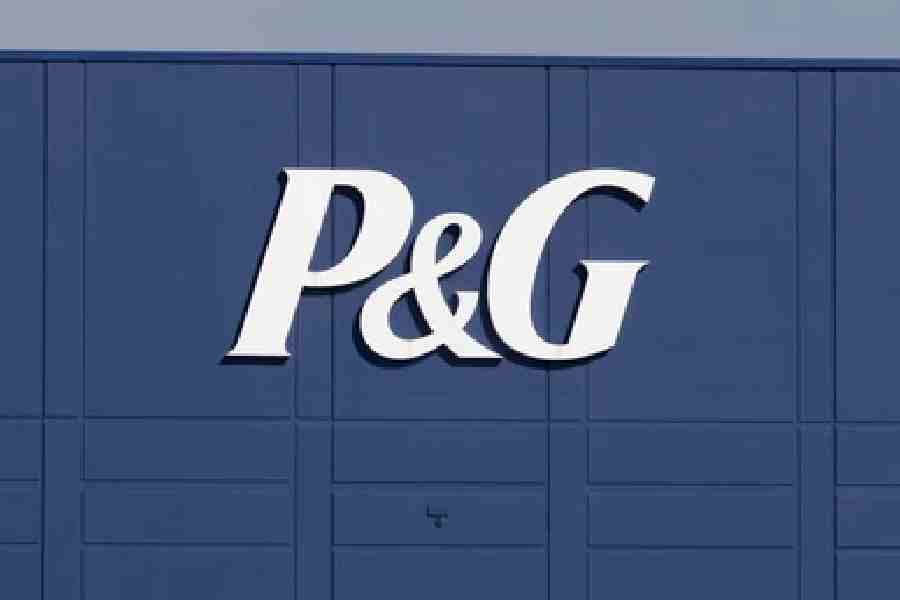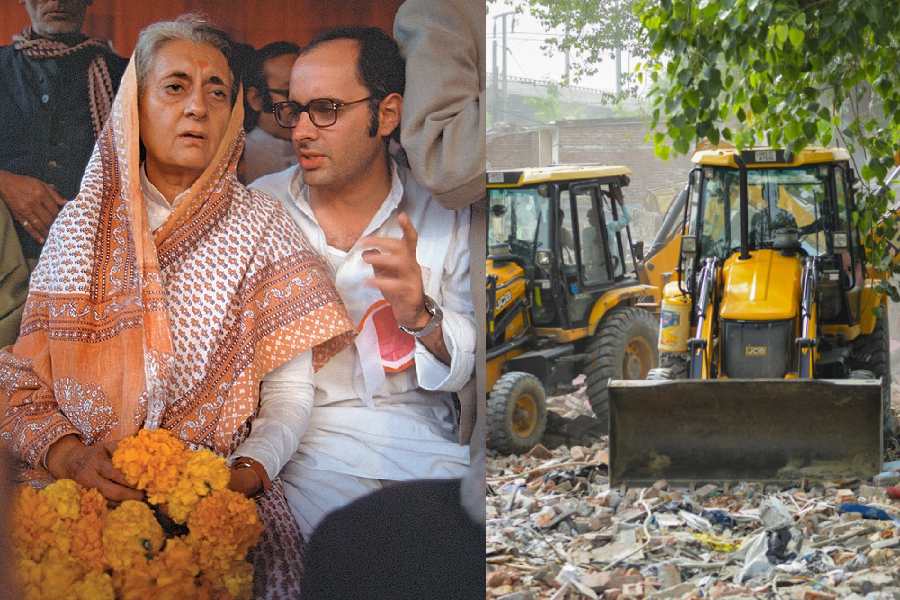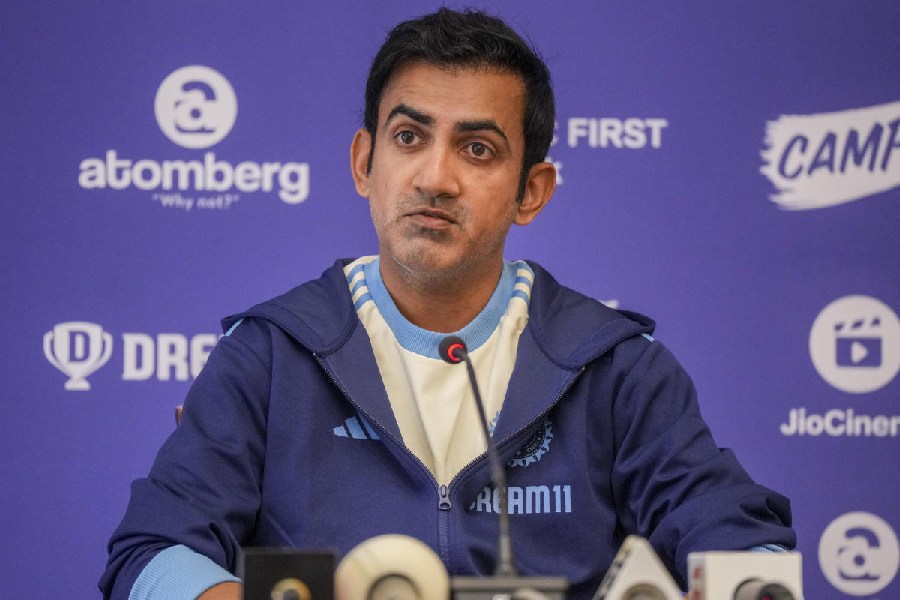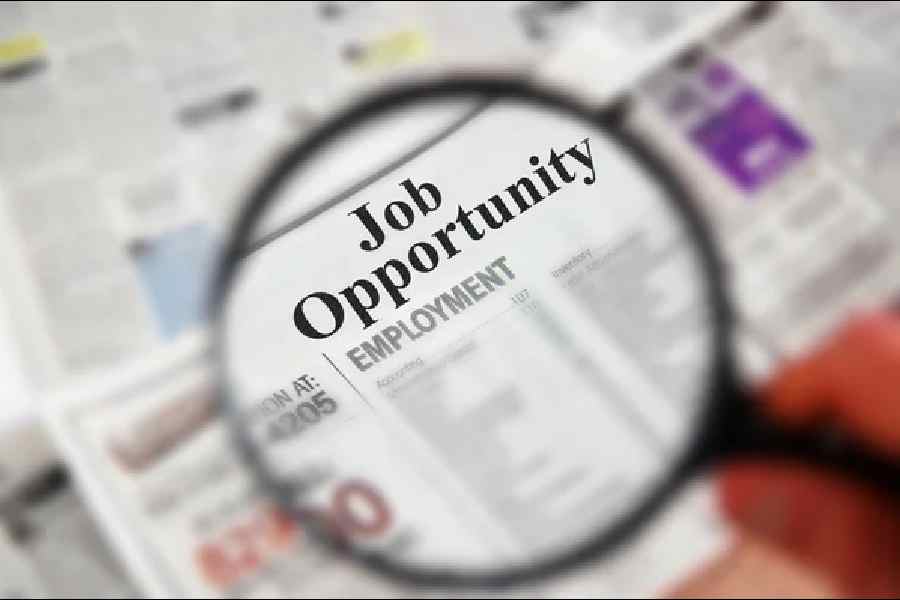

The year was 1940. We used to stay near Rajabazar. The country was in the throes of political upsurge against British rule. I was in Class VIII at St. Paul's School. One day on the black board I wrote ‘Vande Mataram’, ‘Down with British Empire’. I was made to stand facing the wall for half an hour and hit with the wooden duster on my hands.”
Seated in his apartment at East Enclave Housing Estate in New Town on the eve of India’s 70th Independence Day anniversary, Samir Kumar Basu, now 89, reminiscences about the turbulent run-up to August 15, 1947. He may be hard of hearing now but his memory remains largely intact.
Talking of the freedom struggle, he briefly harks back to his childhood. Basu’s father was a professor at Jagannath College in Dhaka. So during summer and Puja vacations, they crossed the Padma in a steamer to visit Calcutta and take the train to Sealdah. “Once on the way back from Dhaka, two women got on the train. One of them was weeping copiously. Grandma asked the other lady why she was crying. She replied that she was Benoy's sister-in-law and had nurtured the motherless boy. The boy was missing and the police were searching for him. So they were escaping to Chandernagore, which was a French settlement and hence outside British control.”
Benoy Krishna Basu, he later learnt, was a revolutionary who had planned to kill Lowman, the inspector general of police during his visit to Mitford Medical School hospital, Benoy’s alma mater. On August 29, 1930, Benoy breached the security and fired at close range. Lowman died instantly and Hodson, the superintendent of police, was injured. Benoy’s photo was put over all over. Basu had met Benoy’s sister-in-law soon after the incident. He was barely three years old but still remembers the crying woman.
This is the Benoy of the trio Benoy-Badal-Dinesh who took part in the corridor battle at Writer's Buildings trying to kill Col N.S. Simpson, the inspector general of prisons, who was infamous for torturing political prisoners. Dalhousie Square is named after them.
Turbulent times
In the early 40s, Calcutta was bracing for attack by Japan bombers, called “Jap planes”. “The first three years after World War II started, there was no trouble. From 1942, the rumours started that they would target the city and the Howrah bridge which had been built but not opened yet. Sirens sounded air raid precautions. Bulbs and window panes were covered in black paper to enforce a black out. If anyone failed to put lights out in the evening, the ARP would knock at their door."
The Kidderpore tram depot was bombed in 1943 and on another occasion the Gray Street-Hatibazar market area. “Many fishmongers perished.”
After some months, the bombings reduced in frequency. “The British pilots used to chase the Jap planes away. Later we also realised that Netaji had reached Japan by then. My uncle was related to Sarat Bose. Their house had a huge radio set. Sometimes we went to his house at night to listen to Netaji's address being broadcast. ‘I am coming with an army,’ he used to say.”
After passing Matriculation in 1944, Basu joined Presidency College and became politically active. Student politics had been barred at Presidency College after the Subhas Chandra Bose-Oaten incident (in which Bose was rusticated after he manhandled E.F. Oaten, a professor of history who regularly denigrated Indians). The bar was lifted in 1944. “Under the leadership of Kalyan Shankar Roy, the son of Congress leader Kiran Shankar Roy., we kept in touch with Acharya (J.B.) Kripalani’s student Congress.”
On November 21, 1945, the Azad Hind Fauj officers Colonel Prem Sahgal, Colonel Gurbuksh Singh Dhillon and Major General Shah Nawaz Khan were up for trial at the Red Fort in Delhi for “waging war against the King Emperor”.
“We took out a procession from Wellington Square in support of the INA soldiers. At Esplanade and Madan Street crossing, British soldiers lathicharged and fired to disperse an agitating mob. Two people, Abdul Samad and Rameshwar, died. Shyamaprasad Mukherjee later held peace talks with the Governor. CrPC Section 144 (making a gathering of more than five people unlawful) was lifted. Similar agitations were held across the nation seeking their release. Prominent leaders met at Sarat Bose’s house to discuss strategy,” he recalled.
Blood on the streets
Within a few months, Prime Minister of Bengal H.S. Suhrawardy of the Muslim League announced Direct Action Day on August 16, 1946, at the behest of Md Ali Jinnah, in support of the creation of Pakistan. A hartal was called.
"We were waiting to see what direct action meant when we heard a mob was coming from Manicktala, vandalising shops on the way. We were asked to stay indoors and keep lights out at night. But when defence parties started getting formed I too wanted to join. People brought out long knives and bnoti. Gopal Mukherjee, son of revolutionary Anukul Mukherjee, better known as Gopal pnatha because of his mutton shop, helped form resistance groups in every locality. Phata Keshto (a north Calcutta strongman who later started the famous Kali puja) helped procure arms. The locality was secured with wire fencing and we took out a procession.”
He utters the figure 10,000 over and over again. That was the number of casualties from both communities over three days — August 16, 17 and 18 — according to a prominent English newspaper of the time that called the incident “The Great Calcutta Killing” in its headline.
“The science college was close by and people there showed us how to make glass bottle fire bombs using hydrochloric acid, potassium chlorate and sugar. We needed bombs not to kill but to keep trouble-makers away. The ploy was successful. They did not dare to come our way.”
But Basu himself was against wielding arms. He also scolded the others for vandalising a mosque.
After three days, when they dared to step out of the locality he still remembers the blood on the streets. “There were bodies lying opposite the science college. Sarat Bose and Suhrawardy came in a big van with other leaders to broker peace. Slogans were shouted against Suhrawardy as it was he who had declared Direct Action Day, forcing him to go back.”
In September, Gandhiji himself came to Calcutta. He stayed in Beleghata and was scheduled to attend several prayer meetings across the city. One of the venues was Rajabazar Science College. “It was decided that no harm or insult must come Gandhiji’s way while he was in our care. Since I believed in non-violence, I was posted as Gandhiji’s guard.”
Basu had to face one challenge on duty. “Gandhiji did not speak much at his prayer meetings. There was some conversation followed by recitals of Ramdhun. A rabid Gandhi baiter, called Nisha pagla, turned up at the venue, abusing Gandhiji. Ramdhun was stopped. I tried to reason with him and then had to force him out. I still shudder to think what might have happened if Gandhiji was hurt that day. He left the city after peace prevailed.”
Basu was too young to have had a conversation with Gandhiji. But he did take his autograph.
His eyes moisten on being asked to show it. He has conquered Stage III cancer and partially recovered from a heart attack but he could not preserve the autograph book which also had autographs of Sarat Bose and S. Radhakrishnan. “I was persuaded to send it for restoration. It never came back.”
Do you have any memories of those turbulent times? Write to The Telegraph Salt Lake, 6 Prafulla Sarkar Street, Calcutta 700001 or email to saltlake@abpmail.com










